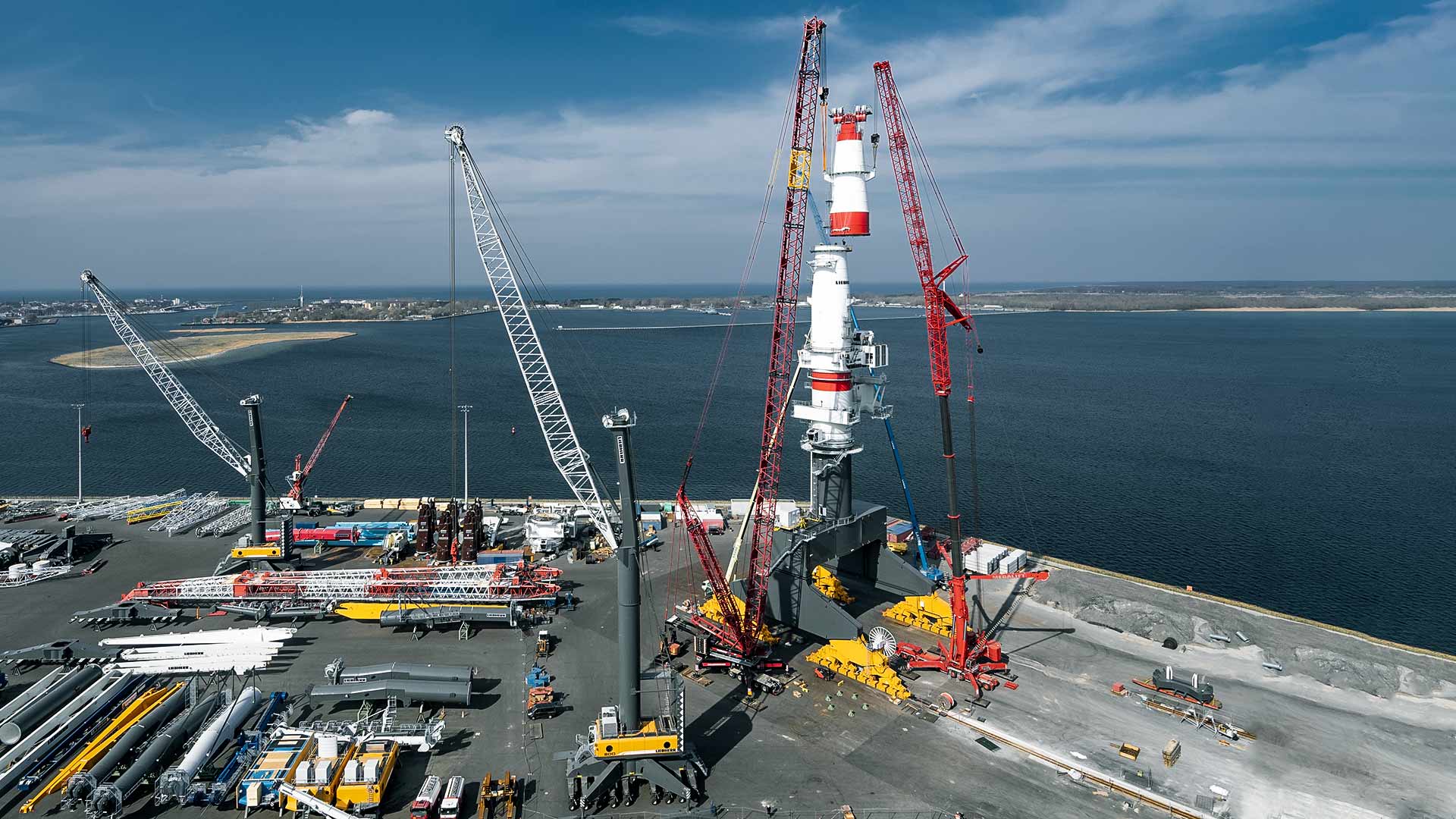Shipyard cranes play a crucial role in the maritime industry, enabling the efficient movement of heavy loads along the waterfront. These towering machines are designed to withstand extreme conditions and lift massive weights, making them indispensable in shipbuilding and repair operations. In this article, we will explore the various types of shipyard cranes and delve into their functionalities and importance in the maritime sector.
The Importance of Shipyard Cranes in the Maritime Industry
Shipyard cranes play a crucial role in the maritime industry. These heavy-duty machines are essential for the construction, repair, and maintenance of ships and vessels. With their immense lifting capacity, shipyard cranes can handle the heavy loads involved in shipbuilding, such as steel plates, engines, and other equipment. They enable efficient and safe handling of materials, reducing the risk of accidents and injuries. Shipyard cranes also contribute to the overall productivity and profitability of shipyards by streamlining operations and minimizing downtime. In addition, these cranes are designed to withstand harsh marine environments, ensuring their durability and longevity. Overall, shipyard cranes are indispensable tools in the maritime industry, supporting the growth and development of the global shipping sector.
Types of Shipyard Cranes and Their Functions

Shipyard cranes play a crucial role in the construction and maintenance of ships. There are several types of cranes used in shipyards, each with its own specific function. One common type is the gantry crane, which is used for lifting heavy loads and moving them horizontally. These cranes are typically equipped with multiple hoists and can handle loads of up to several hundred tons. Another type is the floating crane, which is mounted on a barge or pontoon and used for lifting and transporting heavy objects in water. These cranes are often used for shipbuilding and salvage operations. Additionally, there are also mobile cranes and tower cranes used in shipyards for various lifting and construction tasks. Overall, shipyard cranes are essential in ensuring efficient and safe operations in the shipbuilding industry.
Safety Measures and Regulations for Shipyard Crane Operations
Safety measures and regulations for shipyard crane operations are crucial to ensure the well-being of workers and the prevention of accidents. These measures include regular inspections and maintenance of cranes to ensure they are in proper working condition. Operators must be trained and certified to operate the cranes safely, and they should follow strict guidelines and procedures while operating the equipment. Safety barriers and warning signs should be in place to prevent unauthorized access to the crane area. Additionally, proper communication systems should be established between the crane operator and other workers to ensure coordination and avoid any potential hazards. Regular safety drills and training sessions should also be conducted to keep workers updated on the latest safety protocols. Overall, these safety measures and regulations play a vital role in promoting a safe working environment in shipyard crane operations.
The Role of Shipyard Cranes in Efficient Port Operations
Shipyard cranes play a crucial role in ensuring efficient port operations. These heavy-duty machines are responsible for loading and unloading cargo from ships, as well as moving containers and other heavy items within the port area. With their immense lifting capacity and precision control, shipyard cranes enable the swift and safe transfer of goods, reducing turnaround times and increasing productivity. They are equipped with advanced technologies such as automation and remote control, further enhancing their efficiency and safety. Shipyard cranes also contribute to the overall organization and optimization of port operations, as they can handle multiple tasks simultaneously and adapt to various types of cargo.
Advancements in Shipyard Crane Technology: Improving Efficiency and Safety
Advancements in shipyard crane technology have revolutionized the maritime industry by significantly improving efficiency and safety. These modern cranes are equipped with state-of-the-art features such as advanced automation systems, real-time monitoring, and remote control capabilities. This allows for precise and efficient handling of heavy loads, reducing the risk of accidents and injuries. Additionally, the integration of smart sensors and artificial intelligence algorithms enables predictive maintenance, minimizing downtime and increasing productivity. The use of advanced materials and design techniques has also resulted in cranes that are lighter, yet stronger, further enhancing their performance. Overall, these advancements have transformed shipyard operations, making them more efficient, cost-effective, and safe.
Challenges Faced by Shipyard Cranes and Potential Solutions
Shipyard cranes face numerous challenges in their operations, which can hinder productivity and efficiency. One major challenge is the harsh marine environment, including exposure to saltwater, high winds, and corrosive elements. This can lead to accelerated wear and tear, requiring frequent maintenance and repairs. Another challenge is the need for precise and accurate positioning of heavy loads, which can be difficult due to the size and weight of the objects being lifted. Additionally, shipyard cranes often operate in tight spaces, making maneuverability a challenge. Potential solutions to these challenges include using corrosion-resistant materials, implementing advanced positioning systems, and designing cranes with compact and flexible configurations. These solutions can help improve the durability, accuracy, and maneuverability of shipyard cranes, ultimately enhancing their overall performance.
Conclusion
In conclusion, shipyard cranes play a crucial role in the efficient and safe handling of heavy loads in waterfront areas. These cranes are designed to withstand harsh marine environments and are equipped with advanced technology to ensure precise and controlled lifting operations. With their ability to handle massive loads and their versatility in maneuvering in tight spaces, shipyard cranes are indispensable in the maritime industry.
What are shipyard cranes?
Shipyard cranes are heavy-duty machines specifically designed for lifting and moving heavy loads in shipyards. They are essential equipment for various operations, such as shipbuilding, ship repair, and cargo handling.
What types of shipyard cranes are available?
There are several types of shipyard cranes available, including gantry cranes, floating cranes, portal cranes, and mobile cranes. Each type has its own unique features and capabilities, catering to different requirements and environments.
What are the advantages of using shipyard cranes?
Using shipyard cranes offers numerous advantages. They provide efficient and safe lifting of heavy loads, increasing productivity and reducing manual labor. Shipyard cranes also have excellent maneuverability, allowing them to operate in tight spaces and challenging terrains.
How do shipyard cranes ensure safety?
Shipyard cranes are equipped with various safety features to ensure the well-being of operators and prevent accidents. These features may include overload protection systems, anti-collision devices, emergency stop buttons, and advanced control systems. Regular maintenance and inspections are also crucial to ensure the safe operation of shipyard cranes.
Can shipyard cranes be customized for specific needs?
Yes, shipyard cranes can be customized to meet specific requirements. Manufacturers often offer customization options, such as different lifting capacities, outreach lengths, and control systems. This allows shipyard cranes to be tailored to the unique needs of each shipyard or project.
What factors should be considered when choosing shipyard cranes?
When choosing shipyard cranes, several factors should be considered, including the maximum load capacity required, the working environment, available space, and budget. It is essential to consult with experts or crane manufacturers to determine the most suitable crane type and specifications for the specific application.

